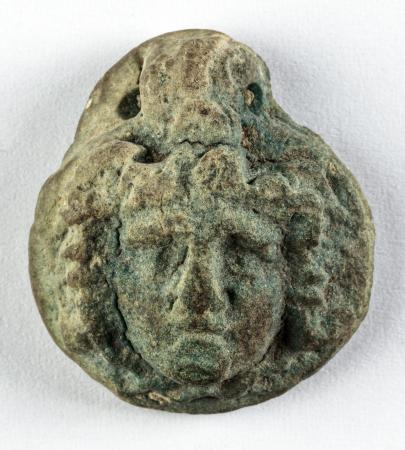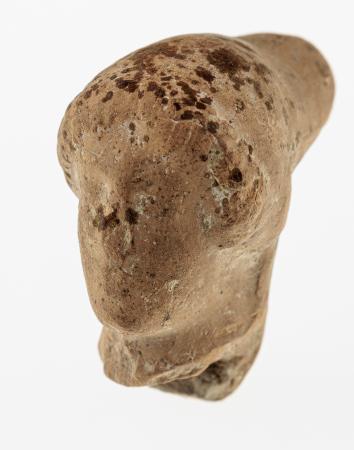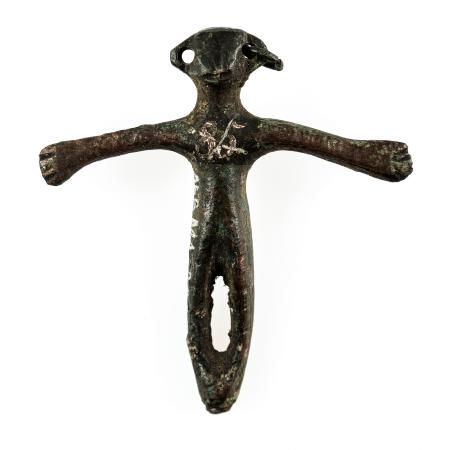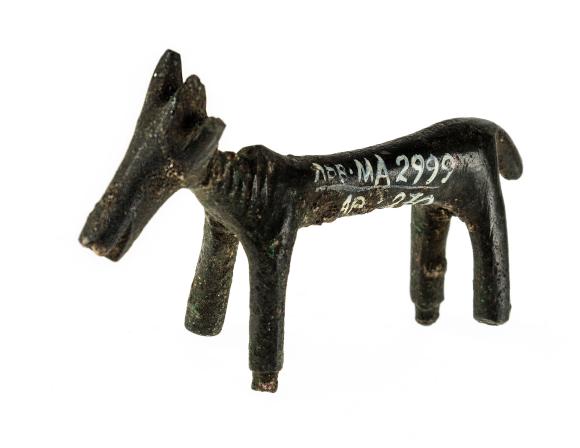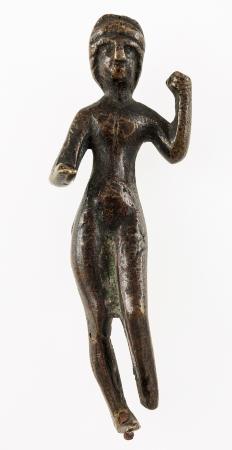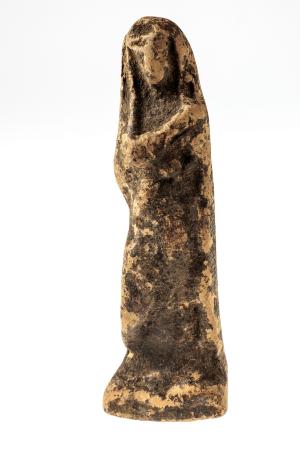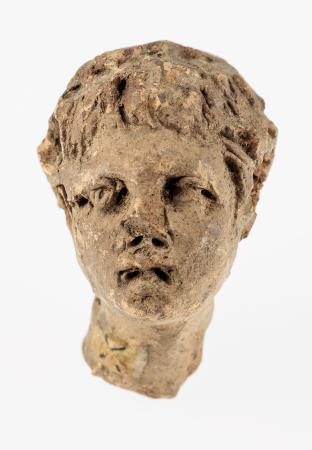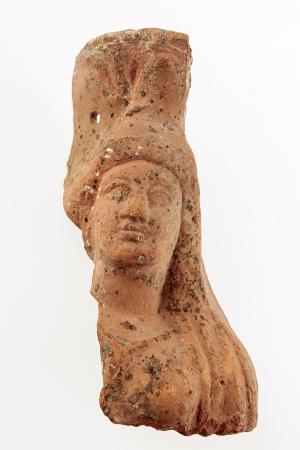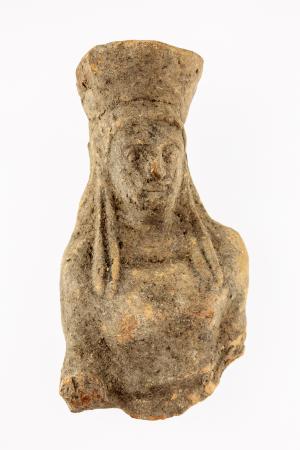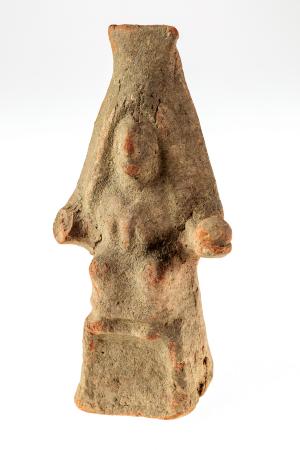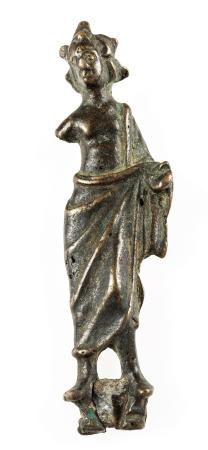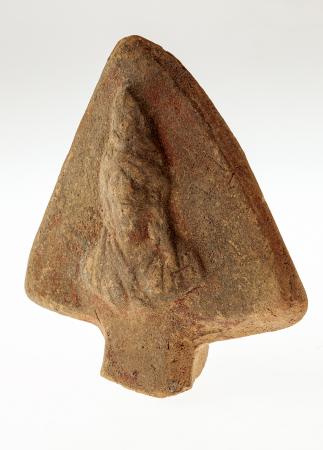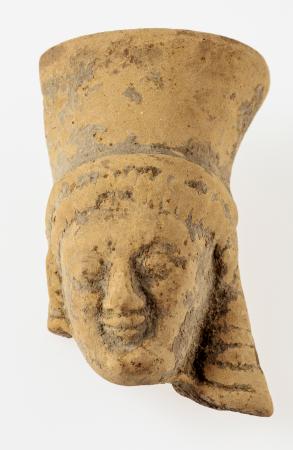Anthropomorphic female sculpture
- Inventory number:
- АР-174
- Creation Date:
- 4th - 3rd millennia BC
- Place of Creation:
- Koshylivtsi village, Ternopil region
- Provenance:
- Lviv Historical Museum
- Technique:
- molding
- Size:
- 23.3 x 9 cm
- Material:
- clay
- Type of object:
- Sculpture
- Subject:
- Cucuteni–Trypillia culture
The figurine has a flat head with a protruding “nose”, on either side of which are eye holes and three more perforated holes. The legs are depicted as an undivided cone. Made from orange clay. Such figurines are interpreted by scholars as symbols of fertility or evidence of a mother goddess cult, representing the protector of family and home, a woman who gives birth to new life. Archaeologist Vikentiy Khvoyka discovered the first Cucuteni-Trypillian settlement in present-day Ukraine in 1893–1894 on 55 Kyrylivska Street in Kyiv. However, the culture was named after the village of Trypillia of Kyiv Region. The area of its spread in Eastern Europe ranged from the Dnipro River to the Carpathians, from Polissia to the Black Sea and the Balkan Peninsula. The settlements of the Trypillians covered a significant area and are referred to as proto-cities. One of the distinguishing features of this culture was the burning of their homes, which could have been caused by soil depletion, a lack of resources for livestock grazing, or perhaps it had a ritual significance. The Trypillians were primarily engaged in cultivation, grain farming, fishing, pottery, weaving, metallurgy (including copper processing), and animal husbandry.



